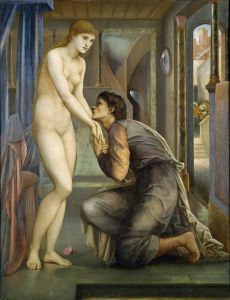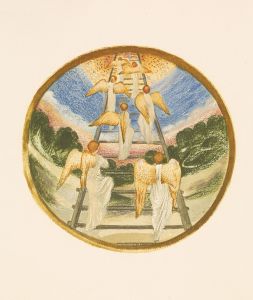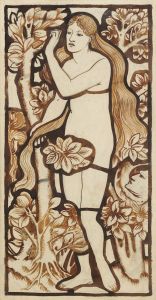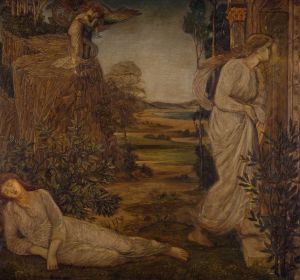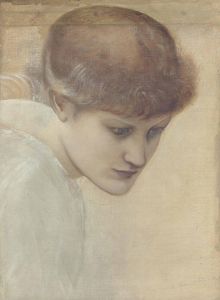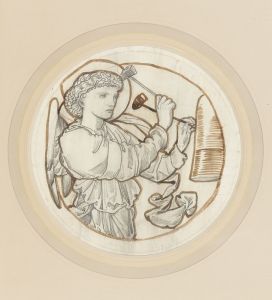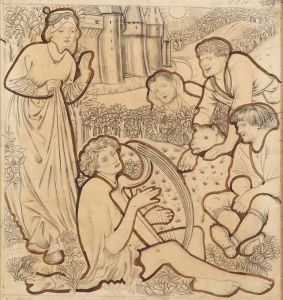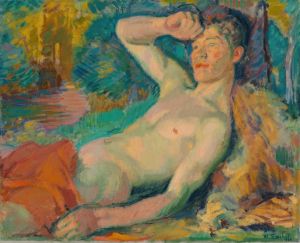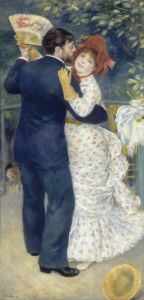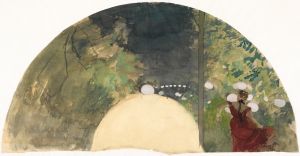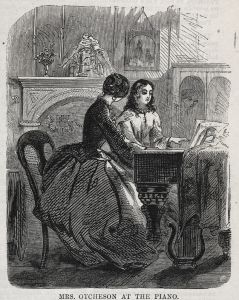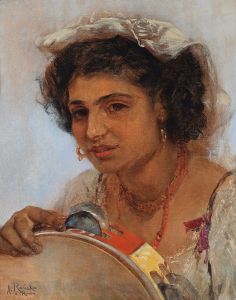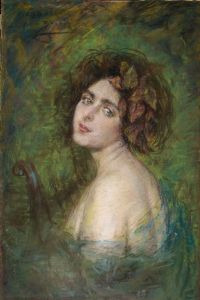
Angel Playing on Pipes
A hand-painted replica of Sir Edward Coley Burne-Jones’s masterpiece Angel Playing on Pipes, meticulously crafted by professional artists to capture the true essence of the original. Each piece is created with museum-quality canvas and rare mineral pigments, carefully painted by experienced artists with delicate brushstrokes and rich, layered colors to perfectly recreate the texture of the original artwork. Unlike machine-printed reproductions, this hand-painted version brings the painting to life, infused with the artist’s emotions and skill in every stroke. Whether for personal collection or home decoration, it instantly elevates the artistic atmosphere of any space.
"Angel Playing on Pipes" is a painting by the British artist Sir Edward Coley Burne-Jones, a prominent figure associated with the Pre-Raphaelite Brotherhood and the later Aesthetic Movement. Burne-Jones, born in 1833 in Birmingham, England, was known for his romantic and often mystical style, which drew inspiration from medieval art, mythology, and literature.
The painting "Angel Playing on Pipes" exemplifies Burne-Jones's fascination with ethereal and otherworldly subjects. It depicts an angel, a common motif in his work, playing a musical instrument, specifically pipes. This choice of subject reflects Burne-Jones's interest in themes of beauty, spirituality, and the transcendental power of music. The angel is often portrayed with delicate features and flowing garments, characteristic of Burne-Jones's style, which emphasizes grace and serenity.
Burne-Jones's technique in this painting, as in many of his works, involves a meticulous attention to detail and a rich, harmonious color palette. His use of color and form creates a sense of depth and movement, drawing the viewer into the serene and contemplative world of the angel. The background and setting are typically rendered in a way that complements the central figure, often incorporating elements of nature or architecture that enhance the overall composition.
The Pre-Raphaelite Brotherhood, with which Burne-Jones was closely associated, was a group of English painters, poets, and critics founded in 1848. They sought to return to the detail, intense colors, and complex compositions of Quattrocento Italian art. Although Burne-Jones was not an original member, his work embodies many of the ideals of the movement, particularly its emphasis on beauty and its rejection of the mechanistic approach to art that characterized the academic standards of the time.
Burne-Jones's work, including "Angel Playing on Pipes," had a significant influence on the development of the Aesthetic Movement, which advocated for "art for art's sake" and emphasized the visual and sensual qualities of art over its narrative or moral content. His paintings often evoke a sense of timelessness and otherworldliness, inviting viewers to escape into a realm of beauty and imagination.
"Angel Playing on Pipes" is part of a broader body of work by Burne-Jones that explores similar themes and motifs. His paintings are housed in various collections, including major museums and galleries in the United Kingdom and around the world. Burne-Jones's legacy continues to be celebrated for its contribution to the revival of interest in medieval and Renaissance art and its influence on subsequent generations of artists.
In summary, "Angel Playing on Pipes" is a quintessential example of Sir Edward Coley Burne-Jones's artistic vision, characterized by its beauty, attention to detail, and exploration of spiritual and aesthetic themes. The painting reflects the broader artistic movements of the time and remains a testament to Burne-Jones's enduring impact on the world of art.





